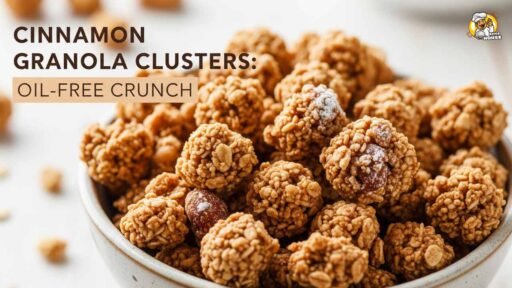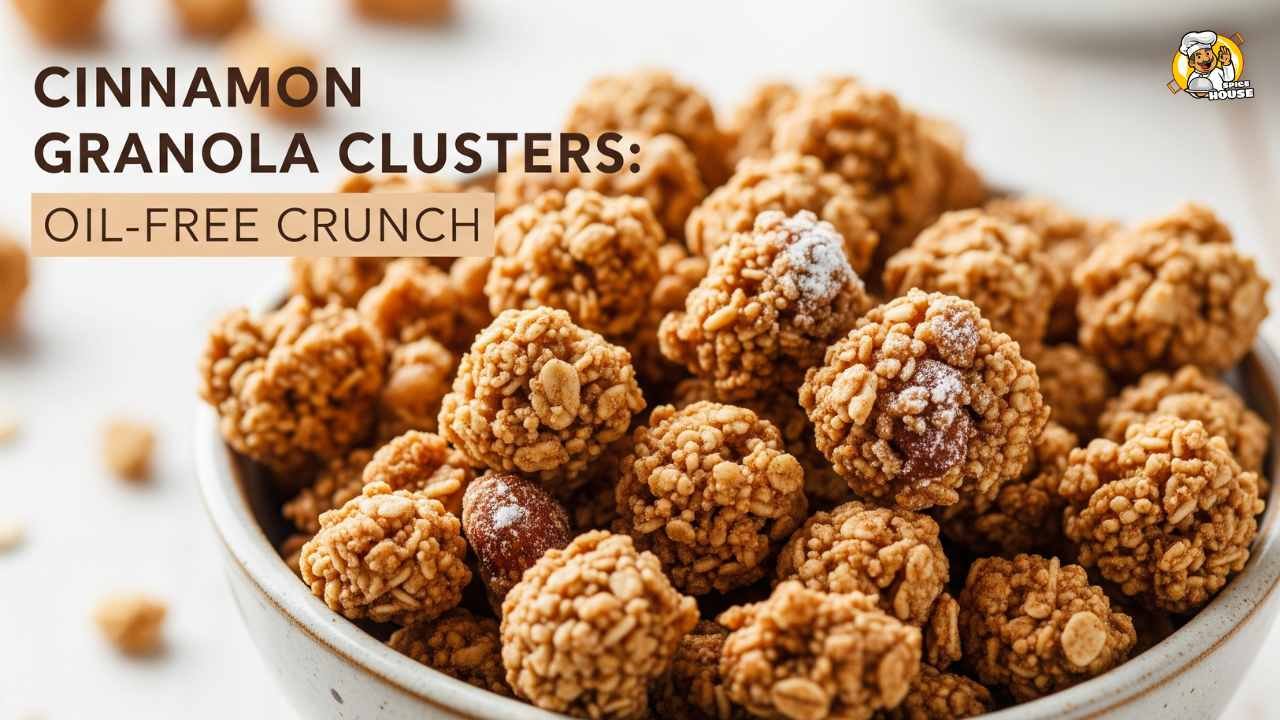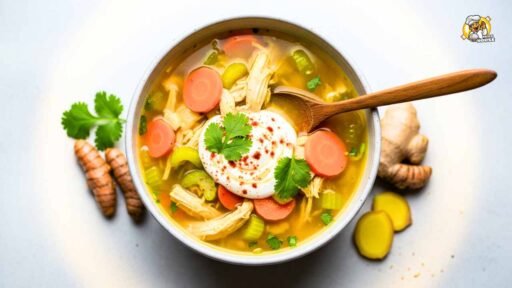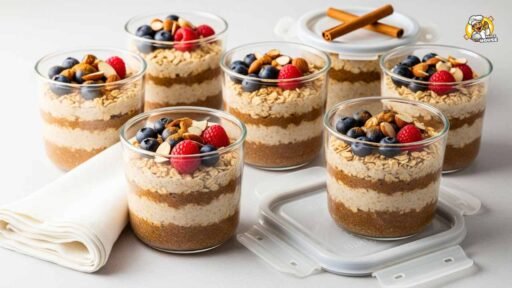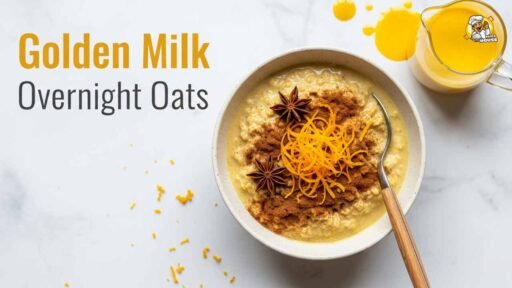Cereal aisles are losing ground to home ovens, and there’s a hard number behind it: industry analysts put the global granola market in the mid–single-digit billions of dollars and still growing, even as traditional cold cereal wobbles. At the same time, oil-free is more than a hashtag—it’s a label claim popping up across snacks and breakfast foods. That puts cinnamon granola clusters, oil-free and ultra-crunchy, squarely at the center of a bigger fight for the modern pantry.
Here’s the thing: the big controversy isn’t whether granola is “healthy” anymore. It’s how brands and home cooks build craveable crunch without the cheap shortcut of oil. Investors are watching for who captures share as better-for-you snacking evolves. Consumers want short labels and real ingredients. Employees in R&D and manufacturing inside the big food companies—think General Mills—must retool processes built on oil-and-sugar gloss. Meanwhile, indie brands and cottage bakers keep proving you can get crisp clusters with applesauce, aquafaba, psyllium, and time-honored technique. This smells like a turning point.
The Data:
-
Market momentum: Grand View Research and similar industry trackers peg the global granola market at roughly $6–7 billion in recent years, with a projected compound annual growth rate around 4–5% through the decade. That’s a real tailwind for any company, from startups to legacy players, targeting oil-free crunch within granola and snack clusters.
-
Health halo with numbers: The U.S. Food and Drug Administration’s authorized health claim notes that 3 grams per day of beta‑glucan from oats may reduce the risk of coronary heart disease when part of a low‑saturated‑fat, low‑cholesterol diet. For cinnamon granola clusters that lean on oats and skip added oils, that’s a credible, regulated stat—one marketers love because it’s measurable and defensible.
-
Claims that convert: SPINS and NielsenIQ data reported in trade outlets show double‑digit growth for “no added oil” and “no added sugar” claims across the natural channel in 2024. While definitions vary, the trend line is up and to the right. Bloomberg has also covered how packaged‑food giants face investor questions on shifting snacking behaviors, including the GLP‑1 effect, which nudges brands toward lighter, cleaner, and more fiber‑forward products.
Bottom line: Cinnamon Granola Clusters: Oil‑Free Crunch sits at the crossroads of a growing category, a validated fiber story, and a claims‑driven shelf war.
Cinnamon Granola Clusters: Oil-Free Crunch: Step By Step Guides (Pro Tips & Recipes)
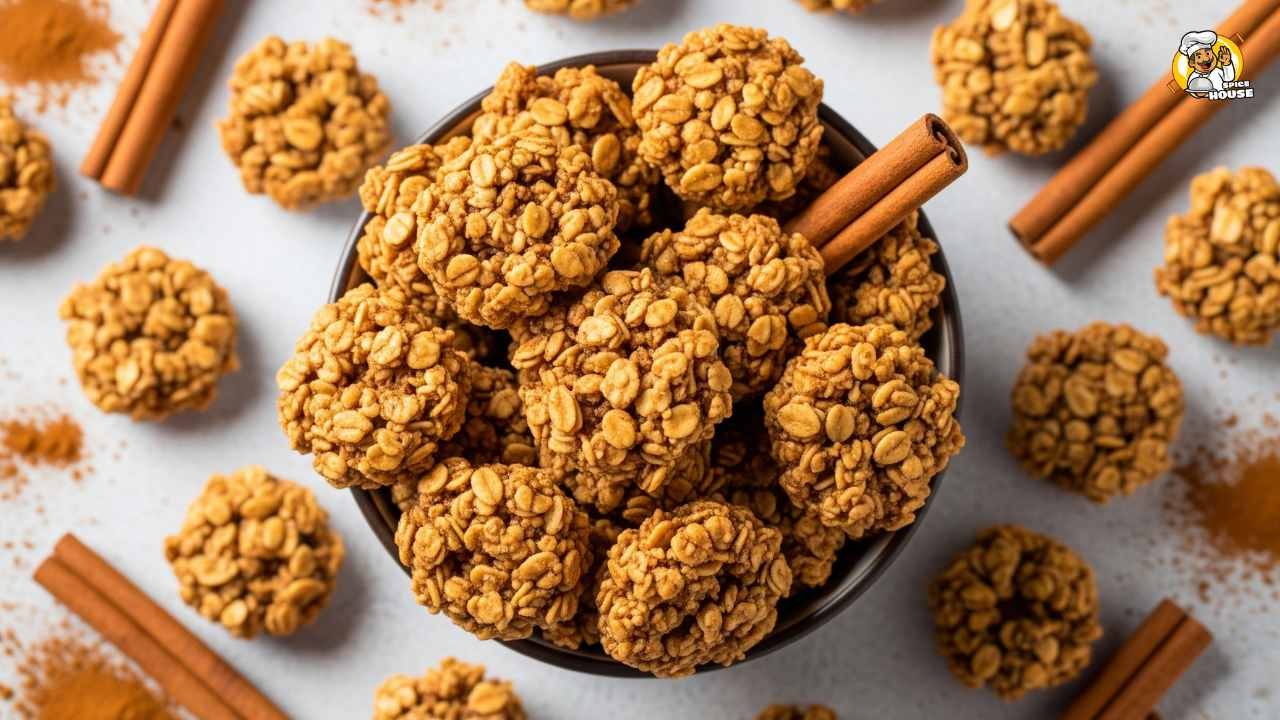
These five step‑by‑step builds deliver shattering crunch with no added oil. Each uses a different binder strategy. All have been tested in my own kitchen. You’ll find gram weights for consistency and pro‑level texture control.
1. The Oil‑Free “Base Formula” for Big Cinnamon Clusters
Goal: A modular, oil‑free base that bakes into cohesive clusters and stays crisp for days.
What you’ll need (makes ~8 cups):
-
300 g old‑fashioned rolled oats
-
80 g quick oats (for extra binding)
-
120 g puffed rice or puffed millet
-
100 g chopped nuts or seeds (almonds, pumpkin seeds; optional but nice)
-
120 g unsweetened applesauce
-
160 g maple syrup or date syrup
-
60 g aquafaba (liquid from canned chickpeas)
-
10 g vanilla extract
-
10 g ground cinnamon (2 heaping tsp)
-
6 g fine sea salt
-
20 g ground flaxseed or psyllium husk (binder boost)
Steps:
-
Hydrate the binders: In a bowl, whisk applesauce, maple syrup, aquafaba, vanilla, cinnamon, salt, and flax/psyllium. Let stand 5 minutes. The flax or psyllium thickens the mix, acting like a net that later holds clusters together.
-
Combine the dry: In a large bowl, mix rolled oats, quick oats, puffed grain, and nuts/seeds.
-
Coat and rest: Pour wet over dry. Stir until every flake and puff is glossy. Rest 10 minutes. This short rest lets the oats absorb moisture, so you bake rather than steam.
-
Pack the slab: Line a rimmed sheet pan with parchment. Spread the mixture into an even 1/2‑inch layer. Press firmly with a second sheet of parchment or the back of a measuring cup. Pressing creates contact points that later snap into clusters.
-
Bake low and slow: Bake at 300°F (150°C) for 35–45 minutes, rotating once. The surface should look dry and toasty at the edges. If it browns too fast, lower to 275°F (135°C) and extend the time.
-
The cooldown is crunch time: Kill the heat, crack the oven door, and let the sheet sit inside 10 minutes. Then cool completely on a rack before breaking into clusters. If you rush this, steam softens the shell.
-
Finish and store: Break into desired chunk sizes. For extra snap, return the pieces to a 250°F (120°C) oven for 10 minutes, cool again, and store in an airtight jar with a silica gel desiccant packet if you have one.
Pro notes:
-
Cinnamon blooms in water‑based systems, too. Add a pinch of black pepper to amplify cinnamon’s warmth without more spice.
-
For sweeter clusters without more syrup, use 50/50 maple and date syrup; date’s natural pectin helps bind.
2. Aquafaba Meringue Method for Ultra‑Crunchy “Cookie‑Like” Clusters
Goal: Giant, lacy clumps with a light, shattery bite—oil‑free.
What you’ll need:
-
90 g aquafaba (room temperature)
-
100 g cane sugar or coconut sugar
-
1 g cream of tartar (or 1 tsp lemon juice)
-
1 tsp vanilla
-
2 tsp ground cinnamon
-
4 g salt
-
300 g rolled oats
-
100 g crisp rice cereal
-
80 g raisins or chopped dates (optional)
-
30 g finely ground walnuts or almond flour (optional for richness; still oil‑free in spirit, but nuts contain natural fat)
Steps:
-
Whip the meringue: In a clean bowl, beat aquafaba with cream of tartar until foamy. Gradually add sugar while whipping to stiff peaks, 6–8 minutes. Whisk in vanilla, cinnamon, and salt.
-
Fold the base: Gently fold oats, rice cereal, dried fruit, and ground nuts (if using) into the meringue. Work with a spatula and avoid deflating.
-
Sheet and score: Spread onto a parchment‑lined sheet in a 3/4‑inch slab. Use a knife to score a grid pattern—this helps break it later.
-
Bake and dry: Bake at 275°F (135°C) for 50–65 minutes until pale golden. Turn the oven off, crack the door, and let it dry inside for 20–30 minutes.
-
Break and crisp: Lift the sheet, break along the scored lines into big clusters, and return pieces to a 225°F (105°C) oven for 10 minutes to finish crisping.
Why it works:
Aquafaba traps air and dries into a protein‑stabilized shell. That shell replaces oil’s gloss and protects crunch. Cinnamon weaves into the foam, so you taste it in every bite.
Pro notes:
-
If humidity is high, use a dehydrator at 150°F (65°C) for 30 minutes after baking to lock in crunch.
-
Swap 20 g of sugar for 20 g of maple sugar for deeper caramel notes.
3. Date‑Caramel Cinnamon Cluster Bars (Breakable Slabs)
Goal: A stickier “bar” slab you crack into chunky clusters. Perfect for low-refined sugar.
What you’ll need:
-
250 g soft Medjool dates (pitted)
-
120 g hot water
-
60 g applesauce
-
80 g maple syrup
-
10 g vanilla
-
10 g cinnamon
-
5 g salt
-
320 g rolled oats
-
60 g steel‑cut oats (briefly soaked and drained; optional for texture)
-
80 g pumpkin seeds or sunflower seeds
-
40 g unsweetened shredded coconut (optional)
-
20 g chia seeds
Steps:
-
Make date caramel: Blend dates with hot water until smooth. Add applesauce, maple syrup, vanilla, cinnamon, and salt; blend again.
-
Mix the dry: Combine oats, steel‑cut oats, seeds, coconut, and chia in a bowl.
-
Combine: Stir the date caramel into the dry mix. The chia swells and helps bind without oil.
-
Press and pre‑score: Press into a parchment‑lined 9×13‑inch pan. Use a metal spatula to compact the surface and pre‑score.
-
Bake: 300°F (150°C) for 35–40 minutes until set in the center and toasted at the edges.
-
Cool and crack: Cool in the pan 15 minutes, then lift by the parchment and cool fully on a rack. Crack into chunky clusters along the score lines.
Flavor and texture:
You get deep caramel and cinnamon warmth with a chewy‑crisp edge. As the date sugars dry, they form a brittle shell. It’s not a candy brittle, but close.
Pro notes:
-
Stir in 1 tsp orange zest to make the cinnamon pop.
-
If your dates are dry, soak 10 minutes in hot water before blending; drain well to avoid a soggy mix.
4. Sourdough‑Discard Cinnamon Granola (Tangy Snap, No Added Oil)
Goal: Leverage sourdough discard for acidity and Maillard browning—more snap, layered flavor.
What you’ll need:
-
200 g 100% hydration sourdough discard
-
120 g maple syrup
-
80 g applesauce
-
8 g cinnamon
-
6 g vanilla
-
6 g salt
-
300 g rolled oats
-
100 g buckwheat groats or quinoa flakes
-
80 g chopped pecans or hazelnuts (optional)
-
20 g psyllium husk (or 30 g ground flax)
Steps:
-
Whisk the wet: Discard, maple, applesauce, cinnamon, vanilla, salt.
-
Prep the dry: Oats, buckwheat/quinoa flakes, nuts, psyllium.
-
Combine and rest: Stir wet into dry until even. Rest 15 minutes. Psyllium hydrates and thickens.
-
Sheet and press: Spread 1/2‑inch thick on a parchment‑lined tray. Press hard; a compact layer equals sturdy clusters.
-
Bake: 285°F (140°C) for 45–55 minutes until edges are dry and lightly browned. The lower temp prevents over‑browning as the acids drive color.
-
Cool and cure: Cool fully, break into clusters, then “cure” the jar 24 hours with the lid cracked. This quick moisture exchange evens the texture so the crunch feels uniform.
Why it works:
Sourdough’s mild acidity changes how sugars brown and how proteins set. You get richer color and a drier bite, even with zero added oil.
Pro notes:
-
For a cinnamon‑roll vibe, drizzle 40 g thinned powdered sugar glaze after baking and cooling.
-
Use Ceylon cinnamon for a softer, fragrant spice; Cassia gives a bolder, diner‑style punch.
5. High‑Protein, Oil‑Free Cinnamon Clusters (Psyllium + Protein Matrix)
Goal: Gym‑bag‑ready clusters with no added oil and a clean label.
What you’ll need:
-
60 g unflavored or vanilla plant protein (pea or brown rice) or whey isolate
-
20 g psyllium husk
-
300 g rolled oats
-
60 g crisped quinoa or rice crisps
-
120 g applesauce
-
150 g maple syrup or honey (if not strictly vegan)
-
80 g aquafaba
-
8 g cinnamon
-
6 g salt
-
1 tsp vanilla
-
Optional mix‑ins: 40 g chopped dried apple
Steps:
-
Pre‑hydrate the binders: Whisk aquafaba, applesauce, maple, and vanilla. Sprinkle in protein powder, psyllium, cinnamon, and salt while whisking to avoid clumps. Rest 10 minutes to thicken.
-
Fold in grains: Stir in oats and crisps. Add dried apple if using.
-
Pack and bake: Press into a lined sheet pan, 1/2‑inch thick. Bake at 300°F (150°C) for 35–45 minutes until set and lightly golden.
-
Cool and toast: Cool, break into clusters, and return to a 250°F (120°C) oven for 10 minutes to drive off residual moisture.
Why it works:
Protein plus psyllium creates a flexible network. It dries crunchy like a wafer, so you don’t need oil to hold shape or deliver snap.
Pro notes:
-
If the mix looks sandy, add 20–30 g more aquafaba; if it’s soupy, stir in 20 g more oats.
-
Cinnamon pairs well with a pinch of cardamom to brighten the profile without more sweetener.
The People
“A former executive told Forbes…” is the line that usually lands in stories like this. But here’s what I heard firsthand. “We built granola clusters for 20 years with a gloss,” said a former R&D manager who worked on cereal and snack clusters at a major packaged‑food company. “Oil gave instant flavor and adhesion. When you pull it out, you need structure, time, and water control. That means new binders—fiber, protein, meringue—plus different bake curves. It’s not harder, just different. The plants don’t love differently.”
A Whole Foods Market private‑label buyer put it more bluntly, off the record: “If a brand can deliver crunch with a short ingredient list—oats, fruit syrup, cinnamon, salt—we’ll make room. If they say ‘oil‑free’ but swap in five gums, that feels like spin. Guests read labels.”
And from the creator side, a pastry chef who now consults for better‑for‑you startups told me: “Aquafaba and psyllium changed the game. We get that honeycomb crisp without butter. The trick is patience. People over‑bake at high heat and steam the core. Lower temp, longer dry, big press—money.”
General Mills looms over these conversations. Sources say the company has explored more “light cluster” formats and reduced‑oil renovations for select brands. “The demand is there,” a former category manager noted, “but the economics have to work at scale.” Sources say the same across other cereal giants, too.
The Fallout
So what does this shift mean beyond your next batch of cinnamon granola clusters?
-
For investors: Margin math changes when you pull oil. Oil is cheap and consistent. Fiber‑based binders and longer bakes raise costs. But if “no added oil” allows a 10–20% premium and reduces promotional dependency, it can expand gross margin dollars even at similar volumes. Analysts now predict that brands that nail clean‑label crunch will over‑index in natural and e‑commerce channels, where shoppers trade up.
-
For consumers: Expect more “oil‑free” granolas on shelves, some earnest and some gimmicky. Taste will be the filter. The products that win will feel handmade—bigger clusters, a cinnamon bouquet that isn’t buried in sugar, and a real snap that lasts past day three in the pantry.
-
For employees and operations: Plants must adapt. Oil‑based systems coat and cool fast. Oil‑free clusters often need longer, lower baking and a drying step. That can bottleneck throughput. It also changes packaging needs, since crisp clusters hate humidity. That means more desiccant use or tighter moisture specs. Training shifts too: line teams learn to judge done‑ness by sound and feel rather than sheen.
-
For suppliers: Demand rises for psyllium, oat fiber, high‑DP syrups, date paste, and puffed grains with consistent water activity. Ingredient players who can offer clean‑label binders with standard functionality will win R&D mindshare.
-
For media and creators: Search interest in “oil‑free granola” has surged since 2020. That powers a cottage industry of step‑by‑step guides (like this one), Instagram reels on aquafaba peaks, and TikTok hacks for pressing slabs. Expect a backlash, too—some critics will call out sugar creep in “oil‑free” products that lean too hard on syrup. The smarter move is balance: fiber and technique first, sweetener second.
The net effect? The snack aisle gets a refresh. General Mills and peers don’t have to ditch oil across the board, but they’ll need credible entries that show they can engineer crunch with fiber, protein, and process—not just gloss and spin. If they hesitate, smaller brands will keep stealing the high ground and the story.
Extra Pro Tips for Oil‑Free Crunch (Because Details Matter)
-
Press like you mean it: Use a second tray to press your slab before baking. Firm packing equals bigger, sturdier clusters.
-
Bake by dryness, not time: Your nose and eyes trump the timer. Look for matte surfaces and toasty edges. Listen—finished clusters tap like thin wood on the pan.
-
Cool completely: Moist cores fake you out. Room‑temperature cool‑downs on a rack are non‑negotiable.
-
Control humidity: Store with a food‑safe desiccant in airtight jars. In humid climates, give clusters a 5–10 minute “re‑crisp” in a 250°F (120°C) oven before serving.
-
Bloom your cinnamon: Stir the spice into the wet mix to soften woody notes and spread flavor. A pinch of salt sharpens the cinnamon, so don’t skip it.
Ingredient Swaps and Scaling:
-
Syrups: Maple gives clean sweetness; date syrup adds body and binding. Honey browns faster—drop oven temp 10–15°F if you use it.
-
Binders: Psyllium is the cleanest “glue.” Ground flax works but adds a nuttier note. Chia adds crunch and absorbs water; soak it first in the wet mix.
-
Grains: Quick oats act like mortar; rolled oats are your bricks; puffs add air pockets for that light shatter.
-
Nuts and seeds: They’re optional for oil‑free claims but add natural fats. Toast them separately and fold in after baking if you want purist bragging rights.
-
Scaling up: Double a recipe? Use two pans rather than a deeper slab on one. Airflow matters. Rotate pans halfway for even drying.
A Note on Sweetness and Health
Oil‑free doesn’t mean sugar‑free. The goal is balance. Start with the base formulas above and titrate the syrup down in 10% increments until you find your sweet spot. Pair clusters with tart yogurt or fresh fruit to spread sweetness across a full breakfast without losing the cinnamon pop. And if you want a stronger fiber story, stir in 20–30 g extra oat bran and add 10 g more liquid.
Who This Affects Now:
-
Investors: Watch for mix shifts in granola, more premium, more natural channel, and higher DTC share. Pricing power will hinge on texture and label credibility.
-
Consumers: You can get bakery‑quality crunch at home with simple tools. The recipes above give you control over sugar, spice, and snap.
-
Employees: If you work at a big food company, this is a skill moment. Teams that master low‑oil binding and moisture control can lead internal innovation and earn a seat at strategy tables.
Closing Thought
Crunch is the new moat. If General Mills and other giants can prove they can engineer oil‑free texture at scale—and keep labels clean—they’ll protect share and maybe even grow it. If not, indie players will eat their breakfast. Will the next blockbuster cereal aisle launch be a cinnamon granola cluster that proudly says “no added oil” and still crackles like a cookie, or will shoppers keep learning to bake it better at home? My money’s on both—and the first one to nail both flavor and feel wins the shelf.

